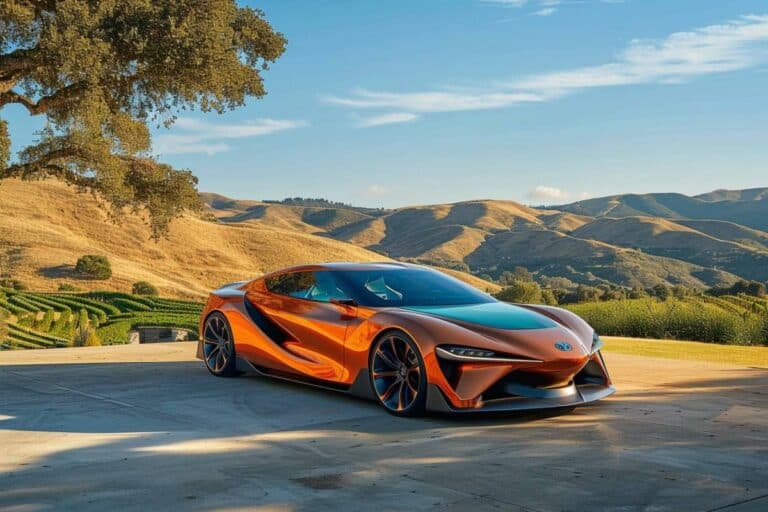The ‘darkest engine on the planet’ begins its operation and breaks all established records
In the fascinating world of automotive engineering, the new development known as the ‘darkest engine on the planet’ has generated a great stir among experts and enthusiasts. This innovative engine has surpassed all previous records of efficiency and sustainability, marking a turning point in the evolution of electric motors. With a revolutionary design, unprecedented power, and a significantly reduced environmental impact, the ‘darkest engine’ emerges as further proof of technology’s ability to transform the energy future of humanity.
In the constant quest for innovation in the automotive sector, a new development has captured global attention. Dubbed as the ‘darkest engine on the planet’, this electric motor has not only shattered all records for efficiency and power but also redefines the standards of sustainability. At the heart of this advancement is the Koenigsegg Gemera, the first model to integrate this innovative engine, showcasing unprecedented performance.
The Dark Matter Revolution in the Koenigsegg Gemera
The revolutionary Dark Matter engine from Koenigsegg represents a milestone in automotive technology. Announced as an innovation that could change the course of electric motors, the Gemera incorporates this engine which, despite its slightly lower power compared to the original system, promises exemplary performance thanks to its lightweight and advanced design.
When it was unveiled in March 2020, the Koenigsegg Gemera astonished the world with its remarkable features. Equipped with a plug-in hybrid system that includes a combustion piece dubbed ‘Tiny Friendly Giant’, it combined efficiency and power, reaching 1,723 HP. This model also offered significant space for four passengers, combining comfort with the experience of a hypercar.
Implementation of the World’s Darkest Engine: Features and Advantages
The electric Dark Matter engine replaces the three original engines of the Gemera, offering a lighter and more compact alternative. Although its power of 815 HP is lower compared to the 1,115 HP of the original configuration, its forged carbon fiber construction and its six-phase structure are key to enhancing the overall performance of the vehicle.
One of the standout features of this engine is its weight, which is just 40 kilograms, contributing to a more agile and dynamic performance. Furthermore, when paired with the 2.0-liter biturbo engine or the powerful 5.0-liter biturbo V8 —the latter coming from the Koenigsegg Jesko— the combined power of the Gemera can rise to an astounding 2,300 HP.
Impact on the Future of the Automotive Sector
The development of the darkest engine in the world has crucial implications for the future of electric and hybrid cars. Its lightness and efficiency could mark the beginning of a new era in the automotive industry, where the balance between performance and sustainability becomes a priority.
This advancement not only concerns Koenigsegg but also highlights a general trend towards the electrification of transport and a focus on environmentally responsible solutions. Manufacturers like Volkswagen are renewing their models, as seen with the revamped Volkswagen Tiguan 4Motion, confirming the expansion of innovative engines in the market.
A Glimpse into the Future of Global Transport
As the darkest engine in the world continues to demonstrate its potential, the global automotive industry is also focusing on other emerging technologies. For example, the transition from combustion engines to plug-in hybrids has been facilitated by creations like the French innovation, demonstrating that versatility will be a pillar in the future evolution of transport.
However, the impact of the ‘darkest engine on the planet’ could be legendary, marking the beginning of the next generation of engines that challenge current limitations and offer exceptional performance without compromising the environment.
Revolutionary Impact of the ‘Darkest Engine on the Planet’
The introduction of the darkest engine on the planet marks a milestone in the evolution of automotive technology. This engine, which has managed to break all established records, not only redefines what we know as efficiency and performance but also signals a crucial shift towards more sustainable solutions in transport. The ability of this engine to surpass previously established limits underscores the untapped potential still residing in technological innovation.
In the constant pursuit of greener mobility, the automotive sector is compelled to innovate to meet the expectations of a world increasingly aware of environmental issues. This engine represents one of the most promising responses to these demands, thanks to its lightweight design and exceptional performance. Additionally, its ability to combine power, efficiency, and a reduced environmental footprint suggests that the future of vehicles could be even more intertwined with advanced electric and hybrid technology.
As the industry continues to explore and adopt technologies such as electrification and hybrid engines, the impact of the darkest engine on the planet will become even more evident. Not only does it potentially improve the design and operation of contemporary vehicles, but it also establishes a new standard for what it means to be “environmentally friendly.” Its introduction highlights the importance of collaboration and ingenuity in the manufacturing of advanced engines that do not rely on conventional fossil fuel usage.
The impact of the engine on the automotive industry comes with significant challenges and opportunities. This development not only represents a technical change but also a transformation in paradigms and expectations. In the near future, the darkest engine could become the catalyst that triggers a new era in global mobility, where sustainability and performance go hand in hand, ensuring that the industry is aligned with goals to reduce emissions and promote a more efficient distribution of resources.




